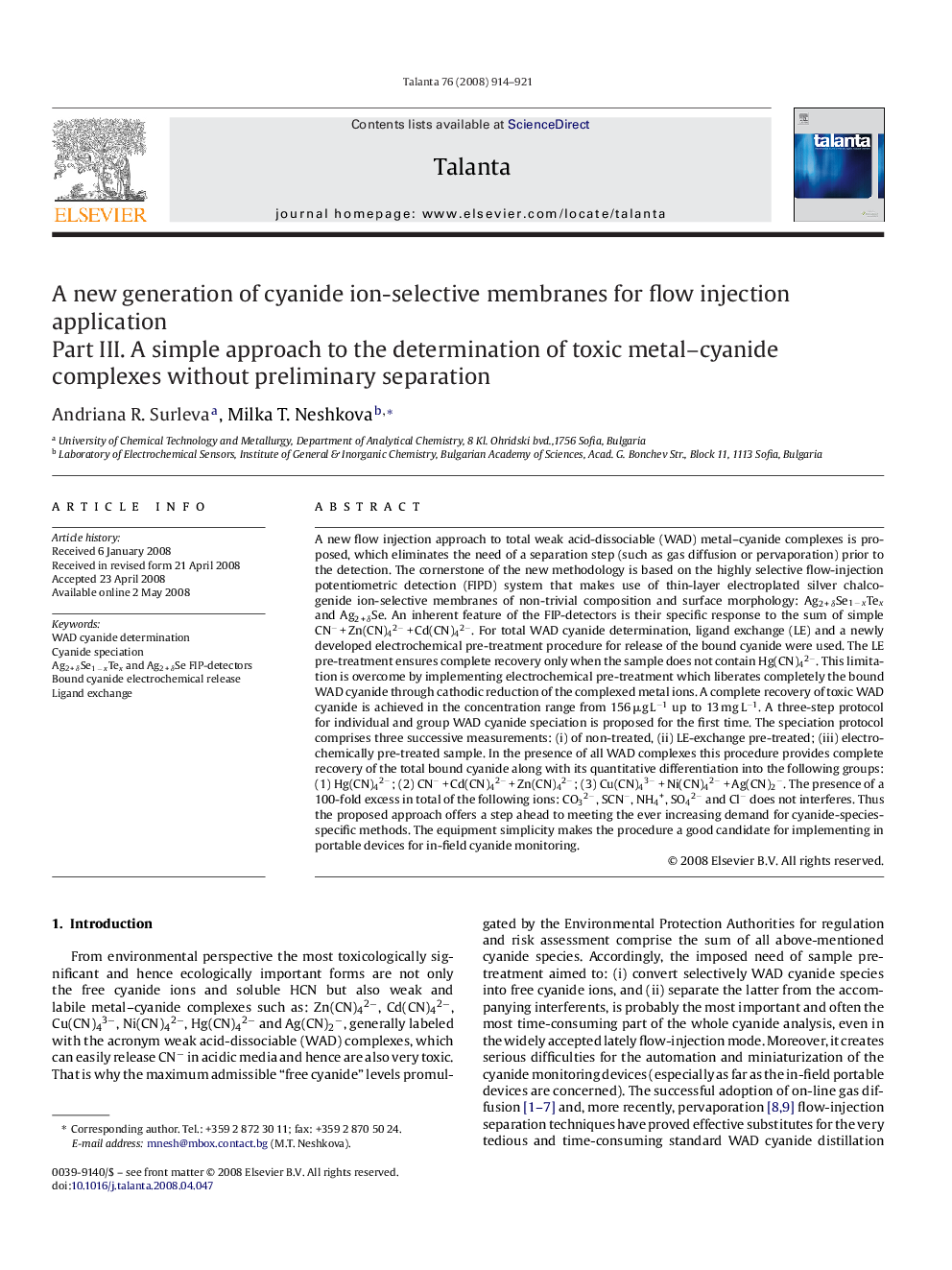| Article ID | Journal | Published Year | Pages | File Type |
|---|---|---|---|---|
| 1243400 | Talanta | 2008 | 8 Pages |
A new flow injection approach to total weak acid-dissociable (WAD) metal–cyanide complexes is proposed, which eliminates the need of a separation step (such as gas diffusion or pervaporation) prior to the detection. The cornerstone of the new methodology is based on the highly selective flow-injection potentiometric detection (FIPD) system that makes use of thin-layer electroplated silver chalcogenide ion-selective membranes of non-trivial composition and surface morphology: Ag2 + δSe1 − xTex and Ag2 + δSe. An inherent feature of the FIP-detectors is their specific response to the sum of simple CN− + Zn(CN)42− + Cd(CN)42−. For total WAD cyanide determination, ligand exchange (LE) and a newly developed electrochemical pre-treatment procedure for release of the bound cyanide were used. The LE pre-treatment ensures complete recovery only when the sample does not contain Hg(CN)42−. This limitation is overcome by implementing electrochemical pre-treatment which liberates completely the bound WAD cyanide through cathodic reduction of the complexed metal ions. A complete recovery of toxic WAD cyanide is achieved in the concentration range from 156 μg L−1 up to 13 mg L−1. A three-step protocol for individual and group WAD cyanide speciation is proposed for the first time. The speciation protocol comprises three successive measurements: (i) of non-treated, (ii) LE-exchange pre-treated; (iii) electrochemically pre-treated sample. In the presence of all WAD complexes this procedure provides complete recovery of the total bound cyanide along with its quantitative differentiation into the following groups: (1) Hg(CN)42−; (2) CN− + Cd(CN)42− + Zn(CN)42−; (3) Cu(CN)43− + Ni(CN)42− + Ag(CN)2−. The presence of a 100-fold excess in total of the following ions: CO32−, SCN−, NH4+, SO42− and Cl− does not interferes. Thus the proposed approach offers a step ahead to meeting the ever increasing demand for cyanide-species-specific methods. The equipment simplicity makes the procedure a good candidate for implementing in portable devices for in-field cyanide monitoring.
